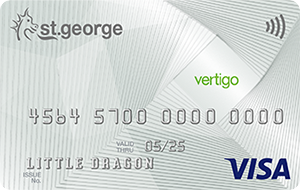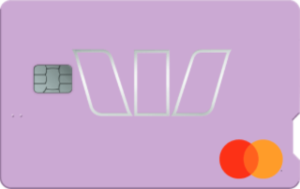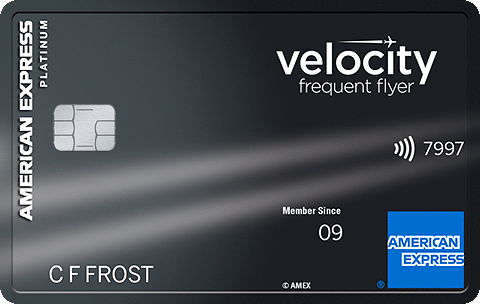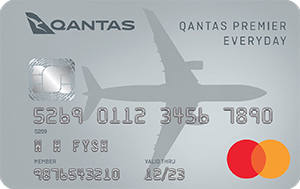
Hi, I’m a personal finance expert who loves to help you out! I’ll answer your question within a business day. Pinky swear.

Your credit card bill is due but you don’t have cash to cover it. Can you use another credit card? Honestly, it’s often not a great idea financially speaking, especially in the long term – but there are options.
For the most part, credit card providers won’t allow you to directly pay off one card with another. But, you can take a more indirect route. For instance, you could take out a cash advance on one card to pay down the balance on another card. Or, opt for a balance transfer, which is what they’re designed for. The question is, are either of these options the right choice for you?
Let’s look at all the options.

Using Your Card To Pay Another Card’s Bill
How Does It Work?
Your credit card statement will likely list a number of ways to pay your monthly bill. You could set up a direct debit, so that each payment is automatically taken from your bank account. Or, you could arrange to pay your bill manually, arranging the transfer over the phone, online, or in some cases, in branch. You may also be able to pay at the Post Office, or via BPAY.
Whether you can use one credit card to pay off another directly will really depend on how each card is set up. Most card providers will try to prevent this type of transaction occurring, as it’s not a good long term solution for either party. With that being said, it could potentially work if you find the right transfer method, such as a BPAY payment from one card to another.
Why Should You Avoid It?
Paying off one card with another in this way is not a great idea. Essentially, you are just moving debt around, rather than paying it off. You may also end up worse off financially, having to cover fees, such as payment handling fees, as well as high rates of interest.
Depending on how your card provider handles transactions such as this, the amount paid out could attract your card’s cash advance rate, rather than the purchase rate, which will mean interest will start stacking up pretty fast indeed.
When Should You Do It?
If your cards do in fact allow for this type of transaction, it should only be carried out if you have no other option available. Consider other options first, such as speaking to your card provider about your inability to make your repayment.
Tips For Making It Work
Look at the various methods you can use to pay your bill, to then find out if any of them allow for card-to-card transfer. Then look more closely at each option to consider the cost of processing the transaction.
If you want to use BPAY, for example, you will first have to make sure the card you are moving funds from will allow you to make BPAY payments. From there, find out how your card provider deals with transactions such as these. Some process BPAY payments as purchases, while others process them as cash advances, with the corresponding interest applied.
You should also look out for any fees you will have to pay, charged either during transfer or by the receiving card provider.
It’s also worth bearing in mind that even if the card you are transferring funds from allows you to make BPAY payments, the card you are transferring the funds to may not accept the payment due to its source.
Overall, this option is best avoided where possible. Remember, while paying the minimum repayment is not an awesome idea month after month, it can offer a short term solution, allowing you to avoid late fees, missed payments, and hits to your credit score.
What About A Direct Debit?
Can you set up a direct debit to pay off one credit card with another? To create a direct debit, you are typically required to complete a direct debit request form to permit the receiving party to draw the payment.
While internet service providers, utilities providers and other such companies may allow you to set up a direct debit payment from a credit card, you will usually find credit card providers themselves require the source of the direct debit transfer to be a bank account rather than another credit card.

Taking Out A Cash Advance
How Does It Work?
Offering a more indirect route, there is the option to withdraw cash from one credit card to pay down the balance on another. To make this work, you would have to use your card to withdraw the cash needed, deposit it into your bank account, and then make the transfer from your bank account to the credit card that’s due to be paid.
Why Should You Avoid It?
Identified as a cash advance, this type of transaction typically comes with fees and a higher rate of interest, making it an expensive solution. Your card will charge cash advance fees, either as a percentage of the amount withdrawn, or as a flat transaction fee. In terms of interest, the transaction will start attracting your card’s cash advance rate from the day you make the withdrawal.
When Should You Do It?
Using this option, again, you are simply redistributing debt, rather than paying it down – while adding to your overall debt with additional fees and interest. However, it could be used as a last resort in certain circumstances.
- If you use this as a short term solution, it could allow you to pay your credit card bill, while avoiding late fees. If you know you have money coming in soon, you can then use those funds to pay off the cash advance, minimising the amount you would pay in interest on the withdrawal.
- If you have a card with a low cash advance rate, you may also find this to be a workable solution – on occasion. While some cards have cash advance rates that reach 23-24% p.a., you can find cards with a much lower rate across both purchases and cash advances.
- If you are considering a payday loan to help you cover your card payment, you may find a cash advance offers a cheaper alternative. However, this will depend on your circumstances.
Tips For Making It Work
Using a cash advance to pay down another credit card could allow you out of a bind, but it’s definitely not a solution to be used month after month. If you are struggling with your credit card repayments, there are better solutions out there that should help you manage in the long term.
However, if you choose to use a cash advance to pay off another card, here are some ways to minimise the damage.
- Try to pay back the cash advance as soon as possible. This should keep interest costs to a minimum. Even if you have a balance owing on that card, any money you put towards paying it down will go to the balance attracting the highest interest first, meaning your payment should clear the cash advance before any purchase transactions.
- Choose a card with a low cash advance rate to keep interest costs down. As an example, the Bank of Australia Low Rate Visa currently has a cash advance rate of 9.39% p.a., while the Community First Low Rate Blue Credit Card has a cash advance rate of 8.99% p.a. Bear in mind, each card still charges a fee for each cash advance transaction, at $3.50 and $5 respectively.
- Don’t make a habit of it. While this can be a handy option when you have no other way to cover your bill, try not to rely on it as a solution.

Opting For A Balance Transfer
How Does It Work?
After applying for a balance transfer card, you would transfer the balance from your existing credit card onto the new card, to take advantage of a much lower rate. The idea behind this is that by paying less interest on your balance, you can use the offer’s introductory period to pay down more of your debt, to clear it faster.
Why Should You Avoid It?
A balance transfer can be a useful tool for paying down debt. But, balance transfers don’t work for everyone. Some cardholders continue to spend, both on their new card and their old card, making it harder to pay down what they owe, to then get stuck in a cycle of debt. Others simply use balance transfers to move their debt around, without paying any of it off.
If you think that applying for a balance transfer card could lead you into more trouble with debt, then it may not be the solution for you. Similarly, if you are only using balance transfers to juggle your debt instead of dealing with it, you may find applying for a continuous string of balance transfer cards could affect your credit score over time.
When Should You Do It?
With that in mind, there are plenty of scenarios in which a balance transfer could be beneficial.
- If you currently have a balance accruing interest on your card, opting for a balance transfer could help you get on top of that debt, to pay it down faster as you save on interest.
- If you have a number of credit cards and store cards, and you are finding it difficult managing them all, a balance transfer card could allow you to consolidate those debts, giving you just one statement due date to keep track of and pay down.
- If you have more than one credit card, that may mean you are paying more than you should in annual fees. Opting for a balance transfer could allow you to transfer the balance from those cards, to then close them down and pay just one – or potentially no – annual fee.
Tips For Making It Work
If you are serious about paying down your debt, a balance transfer could be the way to do it. But, there are dos and don’ts to be aware of. Here are some of the most important rules to keep in mind as you apply for and pay down a balance transfer offer.
- Choose the right offer: Work out how much you can afford to pay back each month, and how long it will take you to clear your debt. Then choose the balance transfer offer with the lowest balance transfer rate, offered over an introductory period that allows you to pay off what you owe.
- Choose the right card: If you want to focus solely on paying off your debt, choose a basic, low cost card with a great offer. Avoid rewards cards, as these require spending to make their annual fee worth paying, which will only make it more difficult to pay off your transferred balance.
- Read the small print: Check whether there are any limits on the amount you can transfer, look for any balance transfer fees that may be applied, and find out what the rate will revert to if you don’t pay off the transferred balance before the introductory period ends.
- Create a repayment plan: Once your card has been approved, set up an automatic payment on the account that will clear the transferred balance within the introductory period. You can also make extra repayments month to month to pay it down faster.

Can You Earn Rewards?
Do you earn rewards when you pay down one card with another? The short answer is no. But also, maybe yes.
- If you are successful in setting up a payment that allows you to pay off one card with another, you may earn points on the transaction if your provider processes it as a purchase. However, this is unlikely. It is more likely the transaction will be processed as a cash advance, which will mean no points.
- Using a credit card to withdraw cash is classed as a cash advance, which also means no points.
- As for balance transfers, this is also a type of transaction that doesn’t earn rewards, so no points there either.

Case StudyJenna has two credit cards. One card she uses for everyday spending, and the other she keeps in case of emergencies. Having let her spending get the better of her, her everyday card now has a balance of $10,500, while her emergency card has a balance of $2,000. With the bill due on her everyday card, she must pay at least the minimum 2% on her balance as the minimum repayment. This comes to $210, which is an amount she doesn’t have readily available. Jenna considers her options. She could set up a BPAY payment from her emergency card to cover this minimum payment. While there are no fees to pay, this will increase the amount owing on her emergency card, bringing her balance to $2,210. As this type of transaction is processed as a cash advance, the transferred amount will accrue interest at a rate of 23% p.a. Alternatively, Jenna could use her emergency card to withdraw $210, and then use that cash to cover the payment on her everyday card. This transaction attracts a $5 fee, plus interest at a rate of 23% p.a. from the day of the withdrawal. Having checked out balance transfer offers, Jenna knows she could apply for a balance transfer card offering 0% on balance transfers for 20 months, with a 1% balance transfer fee. After weighing each option carefully, Jenna decides to withdraw cash on her emergency card to cover the minimum repayment on her everyday card to avoid getting hit with a late fee. However, she also knows she wants to get on top of her debts, and so she chooses to apply for a balance transfer card, transferring the balance from both her everyday card and emergency card. Paying down a total of $12,627 ($10,290 + $2,210 + $127 balance transfer fee), Jenna would make repayments of $632 each month to clear her debt within 20 months. This would save her around $2,855 in interest. |

Why Pay Down Your Balance?
For some cardholders, carrying a balance is a matter of habit. But, that doesn’t mean it’s a good habit. Here are just some of the reasons to get on top of your credit card balance – and avoid situations where you have to consider using one credit card to pay off another.
- Whether your carried-over balance is big or small, it’s costing you in interest. This interest stacks up day by day, with the money going straight into your card provider’s pocket, rather than remaining in yours.
- When you carry a balance, it can be all too easy to get overwhelmed. After all, what’s a little more spending on your card when you’ve already got a balance waiting to be paid? With this mindset, you could find yourself deeper in debt, and in over your head.
- If you have balances owing on multiple cards, you then have to keep track of multiple repayment dates, multiple annual fees, and multiple interest rates. If you’re not organised, you may struggle to keep on top of it all, missing payment due dates and spending more than you should on each card.
- Your credit report keeps track of all your dealings with credit. Missed payments and a revolving balance could affect your credit score, which may then affect your ability to get approved for credit in future when you need it.
- If you have a rewards card or a premium card, such as a platinum or black card, you will not enjoy the full value of the rewards and extras on offer when you carry a balance. By paying out interest, you are essentially lowering the value of those features.

What Should You Do If You Can’t Pay Your Bill?
If you are struggling with your repayments, the first thing you should do is talk to your credit card provider. With COVID-19 causing untold financial toll on cardholders, card providers are on hand to help, offering solutions you may not have considered.
On the other hand, if you are on top of the situation, but know you want to make changes to more effectively manage your finances, you may want to consider working on a budget to find ways to cut back, switching to a lower cost card, or opting for a personal loan.
Moving Forward
While paying off one credit card with another may be a viable option in a pinch, it’s best to go with other solutions if they’re available. Using your card to cover another card’s payment – either with a direct payment or a cash withdrawal – will result in additional fees and interest, so not only are you just moving your debt around, you are also adding to it.
A balance transfer could provide a better long term solution, but you will need to put in the effort to pay down your debt in order to make it work for you. If you opt for this method of paying down your debt, be strict with making your repayments each month, avoid new spending, and close the old card accounts once their balances have cleared.
Photo source: Shutterstock

Pauline Hatch
Pauline is a personal finance expert at CreditCard.com.au, with 9 years in money, budgeting and property reporting under her belt. Pauline is passionate about seeing Aussies win by making their money – and their credit cards – work smarter, harder and bigger.
You might be interested in

Credit Card Types
Credit Card Fraud Statistics

Tips & Guides
Complete Guide to the Velocity Frequent Flyer Program
Recently Asked Questions
Something you need to know about this card? Ask our credit card expert a question.
Ask a question
Hi, I’m a personal finance expert who loves to help you out! I’ll answer your question within a business day. Pinky swear.












